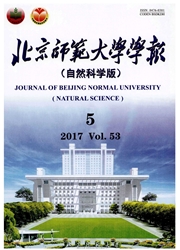

 中文摘要:
中文摘要:
金属蒸汽真空弧放电能够产生高密度的金属等离子体.通过二或三电极引出系统,可以把金属等离子体中的金属离子引出,并加速成为载能的金属离子束,这是MEVVA离子源技术.将载能离子束用于离子注入,可以实现材料表面改性.经过MEVVA源离子注入处理的工具和零部件,改性效果显著,因此MEVVA离子源在离子注入材料表面改性技术中得到很好的应用.另一方面,利用弯曲磁场把等离子体导向到视线外的真空靶室中的同时,过滤掉真空弧产生的液滴(大颗粒),当工件加上适当的负偏压时,等离子体中的离子在工件表面沉积,可以得到高质量的、平整致密的薄膜,称为磁过滤等离子体沉积.是一种先进的薄膜制备的新技术.此外,将MEVVA离子注入与磁过滤等离子体沉积相结合的复合技术,可以首先用离子注入的方法改变基材表面的性能,再用磁过滤等离子体沉积的方法制备薄膜,可以极大的增强薄膜与基材的结合强度,得到性能极佳的薄膜.适用于基材与薄膜性能差别大,结合不易的情况(例如陶瓷、玻璃表面制备金属膜).本文简要介绍了MEVVA离子注入技术、磁过滤等离子体沉积技术和MEVVA复合技术的发展和应用状况.
 英文摘要:
英文摘要:
MEVVA sources or high density metal plasma produced by metal vapor vacuum arc, is widely used in material surface modifications; Metal ions of MEVVA are introduced into vacuum chamber by two or three extraction-electrode systems. The performance of tools and parts is excellent after modification by MEVVA technique, therefore its wide use in material surface modification. In filter cathode vacuum arc system (FCVA), big particles are filtered by magnetic field produced by 45°bent copper pipe, and films deposited by FCVA system have superior properties, such as high film density and excellent film quality. Film adhesion to substrates (on ceramics or glass) can be improved significantly by combining MEVVA and FCVA systems. The main development and applications of MEVVA and FCVA systems in Beijing Normal university are summarized.
 同期刊论文项目
同期刊论文项目
 同项目期刊论文
同项目期刊论文
 期刊信息
期刊信息
